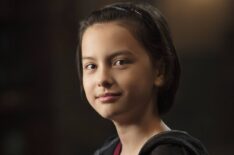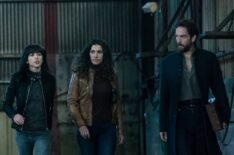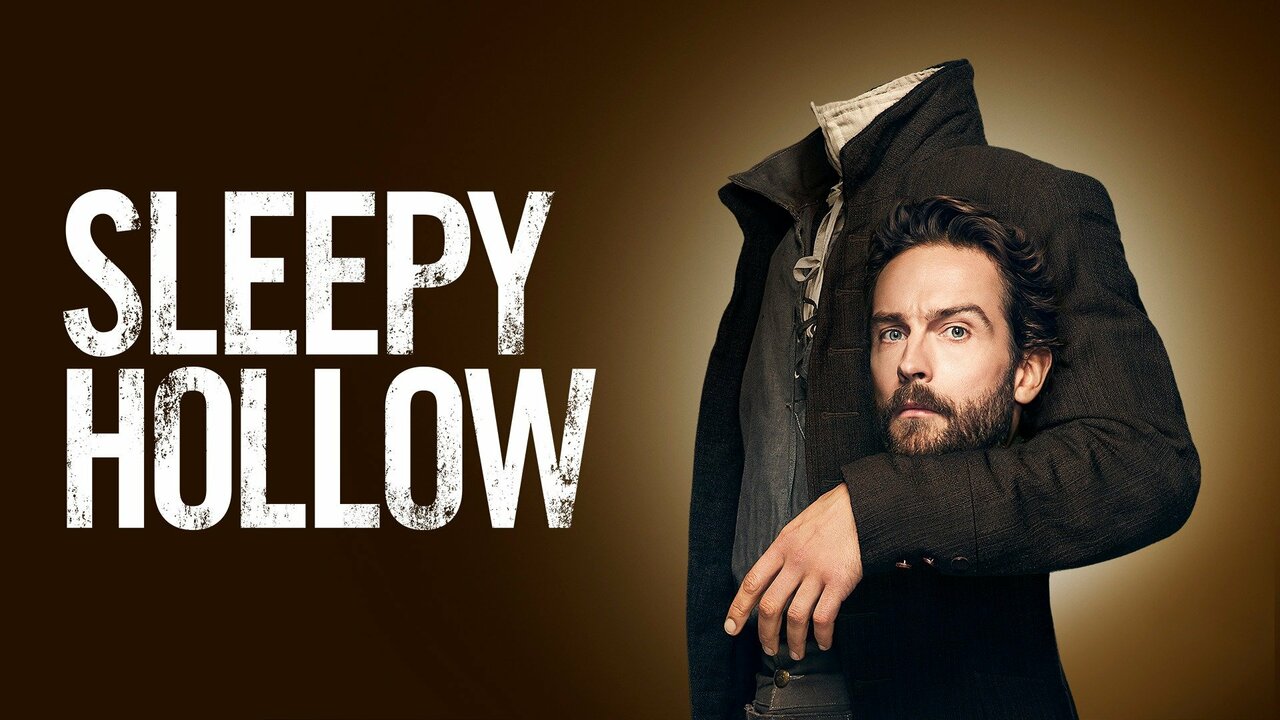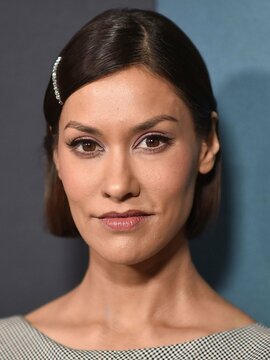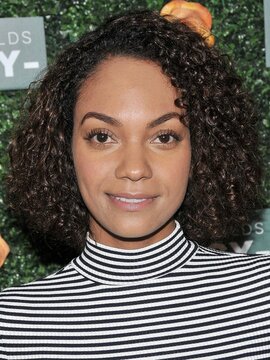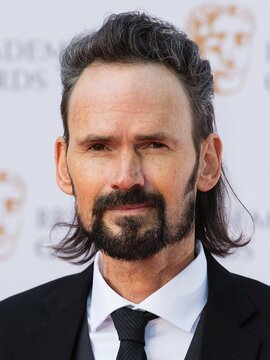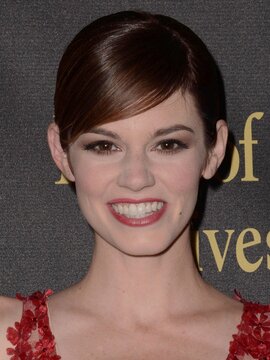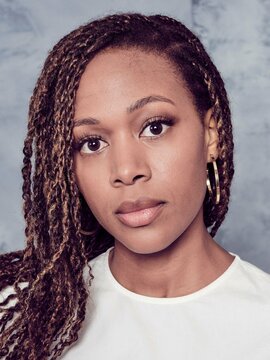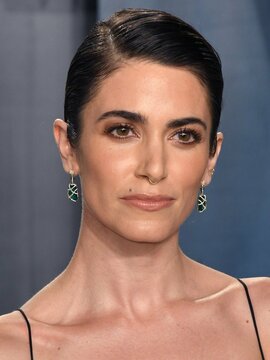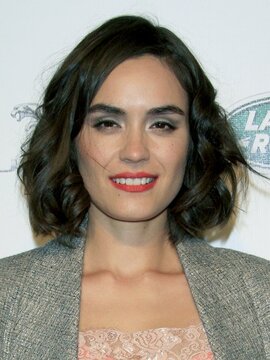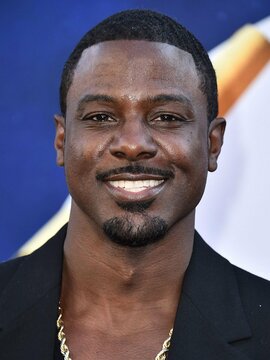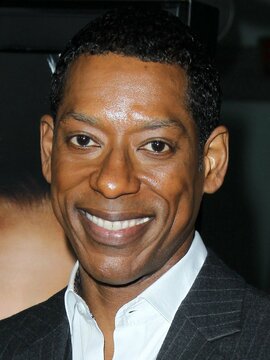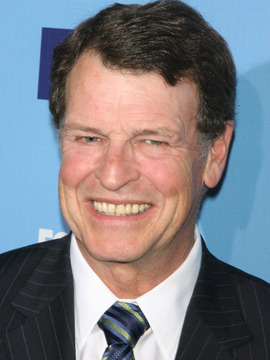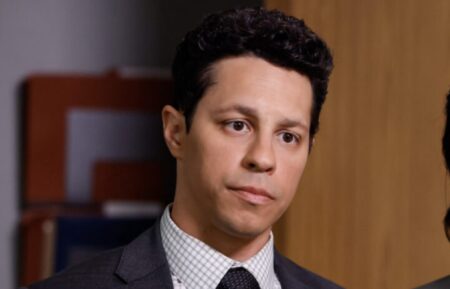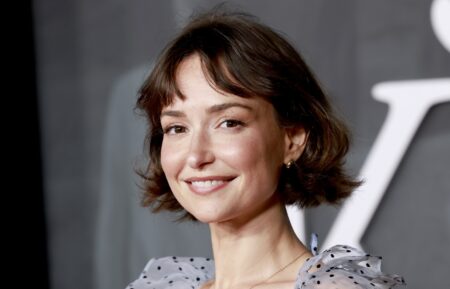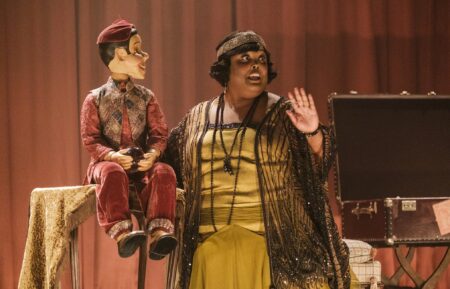‘Sleepy Hollow’ Boss on the Show’s Trip to the Future and Season Finale Teases
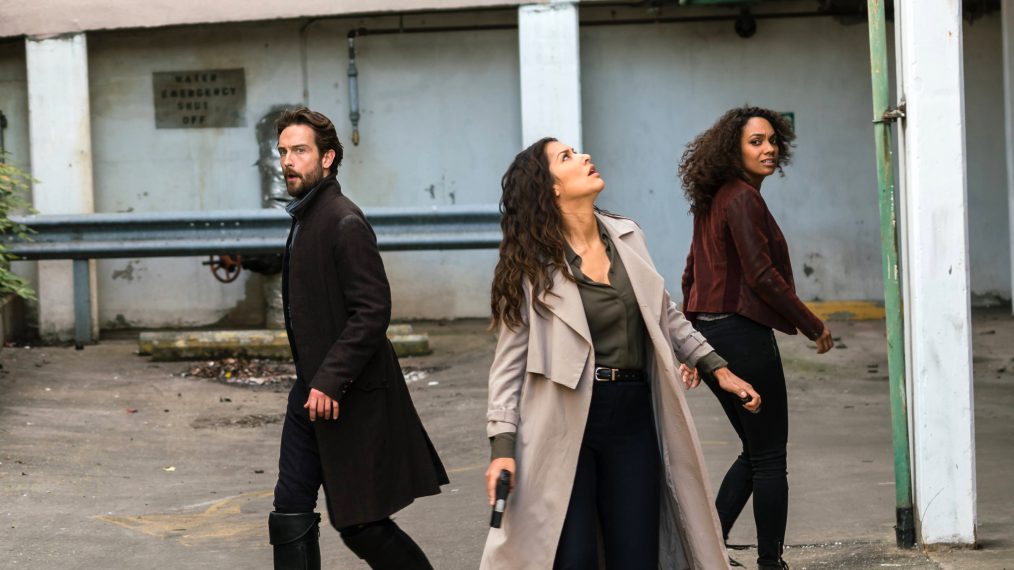
Spoiler Alert
[Warning: This post contains spoilers for “Tomorrow,” the March 24 hour of Sleepy Hollow.]
It took a bit of time traveling (and teamwork), but on Friday’s episode of Sleepy Hollow, Lara (Seychelle Gabriel) officially became a part of Team Witness.
The series went to the future to set up Lara’s decision to go back in time (to present day) to try and prevent her twisted father figure Dreyfuss (Jeremy Davies) from taking power. (The future she left was pretty grim: Crane (Tom Mison) was a prisoner and Jenny (Lyndie Greenwood) was killed in action.)
As for why Molly eventually took the name Lara? “We did talk about it in the writers’ room, and I think it was in least one version of the script: It was Dreyfuss’ mother’s name,” executive producer (and writer of the hour) Albert Kim says. “He renamed her as a way to sever all of her ties to her past life.”
In the present day, the team attempted to free Crane from his transformation into the Horseman of War, ultimately relying on Lara—and her fellow Witness connection to Crane—to help free him. Unfortunately, though Crane was unshackled from War, its presence was still out there…and a newly returned Henry (John Noble), who claimed to Team Witness that he was merely the version of himself Crane wanted him to be, went to Dreyfuss and offered to once again host War.
But can Team Witness defeat Dreyfuss and the Horsemen? Kim reflects on “Tomorrow” and what’s to come.
What debates were there in the writers’ room about where Molly-turned-Lara should be to prompt her to travel back in time?
Albert Kim: Once we decided this was the direction we were going, we began mapping out what Molly’s future would look like. We spent a good part of the season establishing [young] Molly’s character. We had been doing all these things to train her to be the next Witness. We thought it would be interested if the skills she learned from our team were perverted by Dreyfuss. What would that look like?
One of the things we talked about in Lara’s timeline, when Diana dies, maybe she becomes the resistance leader and fights back against Dreyfuss all along. That was one way to go. We thought it was more interesting if she ended up being co-opted by Dreyfuss and became his ally and his friend and his de facto daughter. She did bad things—until her eyes are opened in 12, and she realized she had to make amends. That seemed better motivation to us as why she would jump back in time after all of the things that had gone on beforehand.
Now, it becomes very personal for her: she’s not only trying to correct the timeline so the country is fine, but she wants to make amends for the people she has [hurt] and the mistakes she’s made. That’s what we had in mind going forward. From pretty much the beginning of the season to now, we had to make sure to keep that in mind for Molly/Lara in the future.
In the previous episode, the writers were tasked with masking Lara’s real identity, while still having her interactions make sense once the twist was revealed. In this episode, as the audience and Diana (Janina Gavankar) knew the truth of the relationship, what did that add to the mother-daughter scenes you were able to write?
Those were real fun, because we had the chance to do something you normally don’t get to do in reality or a TV show: a mother gets to confront her grown daughter and get to find out what happened after her so-called death. And see how her daughter ends up, and see how all of her hopes and dreams came true. That was a great opportunity to have the kind of dialogue and kinds of scenes you normally don’t see.
And on the other side for Lara, she got to see a mother she thought she’d never see again. And for her, she’s filled with guilt, because she didn’t end up the way her mother wanted her to. It’s a very painful conversation for her because she has to come to grips with everything she’s done. And for Diana to see what happened to the daughter she knew. What they both end up finding out is they are still the same people they remember. It was a great way to bring all that to the fore in those scenes.
On a related note, in a lot of ways, 4×12 is Lara’s story. It explains how she got here, the journey she needs to make. Her journey in this episode mirrors Crane and our team’s journey in the season at large. At the beginning of the episode, she believes the Witnesses aren’t real; it’s a legend she was told as a kid. And Dreyfuss has reinforced that misconception in her. By the end of the episode, she has to fully embrace [the truth] in order to survive. She can only do that in reaching out and trusting in Crane, her fellow Witness.
The moral of the story is you can’t do this alone; you can’t win this alone. And that’s something our team is learning as well. You’ll see it play out more in 4×13—only working together, which in [the finale] is the greatest evil they’ve ever faced: the four horsemen of the apocalypse. And Dreyfuss is all about the power of the individual; it’s his way and no one else’s. Crane is all about democracy and power of the people and family. It’s those two things that are pitted against each other.
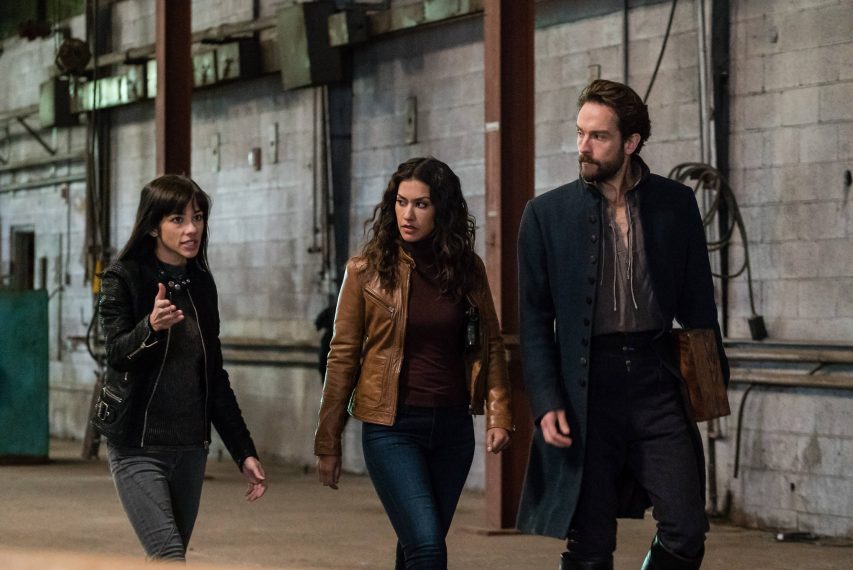
Seychelle Gabriel, Janina Gavankar and Tom Mison in Sleepy Hollow
Now that history has changed, is Lara’s time in the present day limited?
No, the version of time travel we do on the show is that once you go back to the past and you start changing things, you start a new timeline. They’re on a new timeline now. It’s not one of those time travel shows where if little Molly gets a cut on her hand, a grown Molly has a scar. They’re now two different people. This is time travel like Terra Nova…we’re now in a different timeline than Lara had as her reality.
So, is she stuck in this timeline now that things did shift?
She explains [if that’s the case] in the finale.
Crane was largely absent due to him being in danger for the entire hour. Was there ever any version that showcased more of his torment as he was transitioning to War?
The only part I wanted to see more of was Old Man Crane in the future. I’ll be honest: I could have set an entire episode set in that future timeline. The realities of our show and the amount of time we had to tell the story dictated we couldn’t do that. If we had more episodes to play with, it might have been a possibility. But here we only had one scene of Old Man Crane. I would have loved to have more and filled in those blanks. But for now, it’s something viewers can fill in with their imagination. As for the rest of the episode, a big chunk of the episode is told from Lara’s POV. This is her viewpoint…that’s how we narratively divvied up the character stories in this episode.
What were the production joys/challenges of creating the future world?
It was really exciting in the production meetings about how we’re going to establish the future. That was one of the really fun things to do this season; we got to design an entire new world. We had a lot of conversations about what that was going to look like—both in terms of production designs and how we were going to shoot it. We wanted to make sure it felt like a different world than the one we live in. It was lit a little differently. It was always meant to be a recognizable world; it wasn’t 100 years in the future. So there are the familiar iconic places in Washington [D.C.], but they’re all slightly tweaked. There’s something wrong with each other.
We talked a lot with makeup and hair about how we were going to age Jenny and age Crane. With Crane, we had seen earlier, so those conversations started way back then. With Jenny, we talked to Lyndie and said, “We’re going to have to age you up a bit.” And she was really excited about it. Lyndie was really excited about doing her death scene, which was a little weird, but she was really into doing it! [Aging her] was about playing with her hair, playing with her makeup. Making her a Jenny Mills who has been through quite a bit; she has some scars. Both she and Tom changed their voices a little bit so they’d seem like older people.
A lot went into crafting this vision of the future. That sequence in the beginning when they battle the Horsemen, we ended up scouting Atlanta and went to a lot of different places. At one point we went to a place that was really futuristic; that didn’t quite feel right for what we wanted to do. Keeping in the spirit of Sleepy Hollow, we wanted for it to feel historic as well. One of the last places we looked was an old military base, which is currently being transformed into Tyler Perry studios. It had that feel of being classic, old, familiar, but also something you might see in the future as well. It worked out really well for us.
The scene with Lara and Dreyfuss, it’s the lair, but in the future, we see he’s repurposed it and made it into his own library/museum. So we just emptied out that set and filled it with books and artifacts. Frankly, if you look closely, you’ll see there’s stuff plundered from the vault and the archives. He’s taken all that in the future and he’s brought it back to his place. And that was our subtle way of saying, “All that stuff our team has collected and used? It now belongs to Dreyfuss.” It was a lot of fun working in the future world. In a perfect world, we’d spend a few more episodes telling stories about the future. But maybe down the line.
Henry, seemingly, conned Team Witness into believing he was a good guy. Should we take him at his word by the end of the episode? And what else can you preview about his arc in the finale?
What’s missing in 4×12 is an actual face-to-face between Henry and Crane, because of the circumstances they were in. In 4×13, we’re going to get the really meaty scenes between Henry and Crane. Both in [a supernatural] setting and the real world. That’s where you’ll learn which way Henry ends up going. There’s a lot between the two of them. But one of the joys of working with someone like John Noble is no matter how many times he’s evil [on the show], he has the ability to convince you he’s reformed and is good again. We use that to our full advantage in 4×12. Because you buy it when he plays innocent Henry. You think, “Maybe he is good Henry again!” And then he pulls the rug out from under you like he always does. And that’s because of what an amazing actor John Noble is.
Now that Lara saved Crane, what can you preview about Team Witness as they go into this big battle?
It sets the stage for everything that is going to come in the finale. The thing that Lara goes through—she has to learn the lesson she can’t do it by herself, she needs to work with her family—that’s also something that was set up for Team Witness for 4×13. That’s something we’ve been playing with all season long, and it comes to fruition in the finale.
Anything else you can tease about the finale?
One of the great things you’ll get to see is the Four Horsemen riding in our world, wreaking havoc and showing off the destructive power they yield. That’s something we hinted at from the beginning of the show, frankly, when we raised Headless as the Horseman of Death. For the first time, it’ll be all four riding on this earth. It was a fun thing both as a viewer and as producers. You get a glimpse of them in the future in 4×12. When we were doing that, and I saw all Horsemen out there, it was a pretty chilling moment. Everyone on the crew stopped and started taking pictures of all four of them. [Laughs.] Then we had to get them to get back to work. That was a pretty great moment.
Sleepy Hollow, Season Finale, Friday, March 31, 9/8c, Fox

